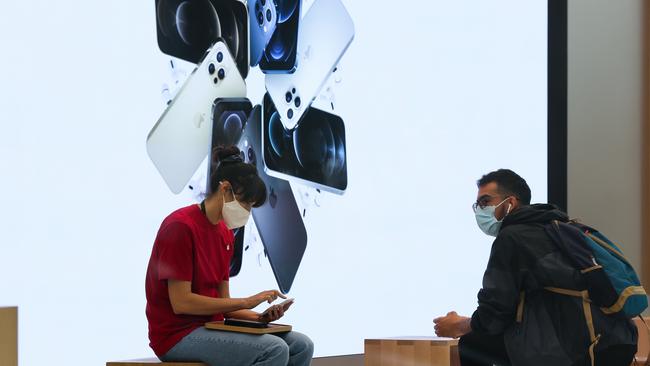Boom in capex helps to counter inflation
Spending on technology is soaring as businesses adjust to higher wages and remote work. It’s a boom that could boost productivity and counteract inflationary pressure.

American businesses are ramping up technology investment and other capital spending as they emerge from the pandemic. If sustained, that investment boom could boost productivity and living standards and counteract inflation pressure.
Private non-residential business investment grew 7.4 per cent in 2021 from the previous year after adjusting for inflation, the fastest pace since 2012 and a strong bounce-back from the 5.3 per cent decline in 2020.
Spending for software and information-processing equipment such as computers rose 14 per cent in 2021 from the previous year.
Since the first quarter of 2020, when Covid-19 began spreading rapidly in the US, those categories have grown vastly more than others, such as buildings, for which there is less need as work is increasingly done remotely.
Business spending is likely to stay strong this year. Manufacturing firms surveyed by the Institute for Supply Management plan to raise capital expenditures by 7.7 per cent in nominal terms in 2022. Service firms expect a 10.3 per cent increase.
The new investment has contributed to an uptick in productivity by making workers more efficient. Productivity, which measures workers’ output per hour worked, grew an average 2.2 per cent a year in 2020 and 2021, up from a 0.9 per cent average between 2011 and 2019, before the pandemic.
A more productive economy can produce more goods and services with the same number of hours worked. Over time that could raise workers’ wages without pushing up inflation.
Robert Rosener, a senior economist at Morgan Stanley, said the uptick in capital spending “is one area that stands out as a significant bright spot for economic growth in the longer term”.
In particular, new technology spending could occur in non-tech sectors, such as retail trade, spreading productivity gains more widely, he said. About three-quarters of retail executives surveyed by Morgan Stanley last year said they intended to increase spending on information technology, up from 21 per cent in 2019.
One driver of the push towards technology is a labour shortage that has executives struggling to recruit and retain employees.
In December 2021 the US labour force was about 1.4 per cent smaller than in February 2020, before the pandemic became widespread in the US. Economic output, on the other hand, was 4.5 per cent higher in the fourth quarter of last year than in the first quarter of 2020, after adjusting for inflation.
Brian Niccol, chief executive at burrito chain Chipotle Mexican Grill, told investors in a February earnings call that the company had been struggling to recruit and was looking at automating some more tedious tasks.
“How do we get rid of the jobs people frankly don’t love doing?” he said.
“If there was a way to cut and core the avocados so that all our team member has to do is mash and add the salt, add the lime, add the onions, that would make their job so much better.”
The Wall Street Journal


